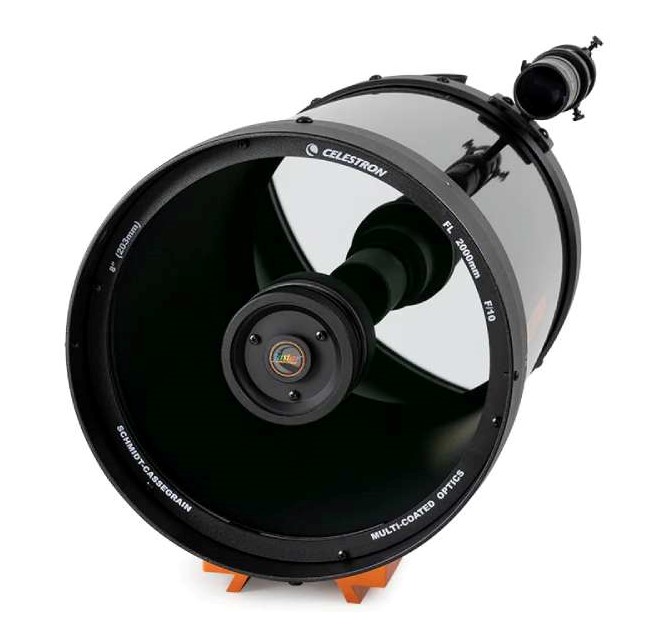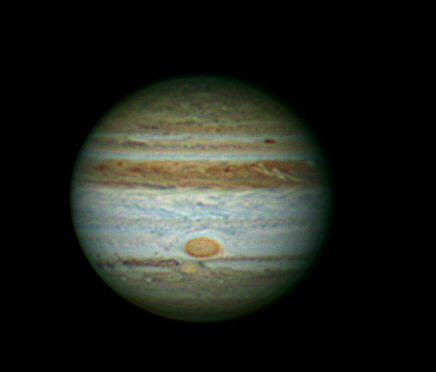
CELESTRON
The Celestron C8-A can be mounted on a multitude of computerized telescope mounts thanks to its CGEM style dovetail bar. This iconic optical tube provides the best balance of portability, handling ease, light gathering ability and price ever offered to the amateur astronomer.
In Stock

Ships within 24-48 hours.
Orders received until 3 p.m. are usually shipped the same day.
 |
 |

The Celestron C8-A is the direct (but much improved) descendent of Celestron’s revolutionary C8 that transformed the hobby of astronomy when it was unveiled in 1970. This rugged aluminum optical tube is only 17 inches long and weighs just 13 pounds, making it easy to transport and set up. But the views are much more impressive than what you’d expect from such a compact instrument. The tube offers 2032 mm of focal length and a focal ratio of f/10, with the added versatility of Fastar (see below).
It is equipped with Celestron’s patented StarBright® XLT optical coatings, which visibly increase contrast and light transmission for brighter deep space images and shorter exposure times. With StarBright XLT, you’ll be able to discern subtle details while viewing the Moon and planets as well as faint galaxies and nebulae.
The Celestron C8-A can be mounted on a multitude of computerized telescope mounts thanks to its CGEM style dovetail bar. This iconic optical tube provides the best balance of portability, handling ease, light gathering ability and price ever offered to the amateur astronomer.
Fastar Technology
In 1997, CCDs were making a name for themselves in the astrophotography world, quickly supplanting traditional film photography thanks to their speed and convenience. This was the year that Celestron joined forces with the Santa Barbara Instruments Group (SBIG) to produce Fastar, a revolutionary add-on to Celestron’s hugely popular Schmidt-Cassegrain (SCT) optical system.
With Fastar, the SCT’s secondary mirror can be removed and replaced with a field-flattening lens assembly (sold separately by third party manufacturers) so that a CCD camera can be used in the front of the telescope at the f/2 focus of the instrument’s primary mirror. The potential of the Fastar system is staggering: exposures are 25 times shorter than if the camera was placed at the instrument’s native f/10 focus. Imagers can capture galaxies and nebulae with exposures of just 30 seconds.
StarBright XLT coatings
StarBright XLT is Celestron’s revolutionary optical coating system. It consistently outperforms all other coatings in the commercial telescope market. There are three major components that make up our StarBright XLT high-transmission optical system design:

| Net Weight (g) | 5670 |
|---|---|
| Optical design | Catadioptric Schmidt-Cassegrain |
| Aperture (mm) | 203 |
| Focal length - F (mm) | 2032 |
| Focal ratio (f/) | 10 |
| Finderscope | 6x30 |
| Diagonal | 90º Mirror, 31.8mm |
| Eyepiece | 25mm(81x) |